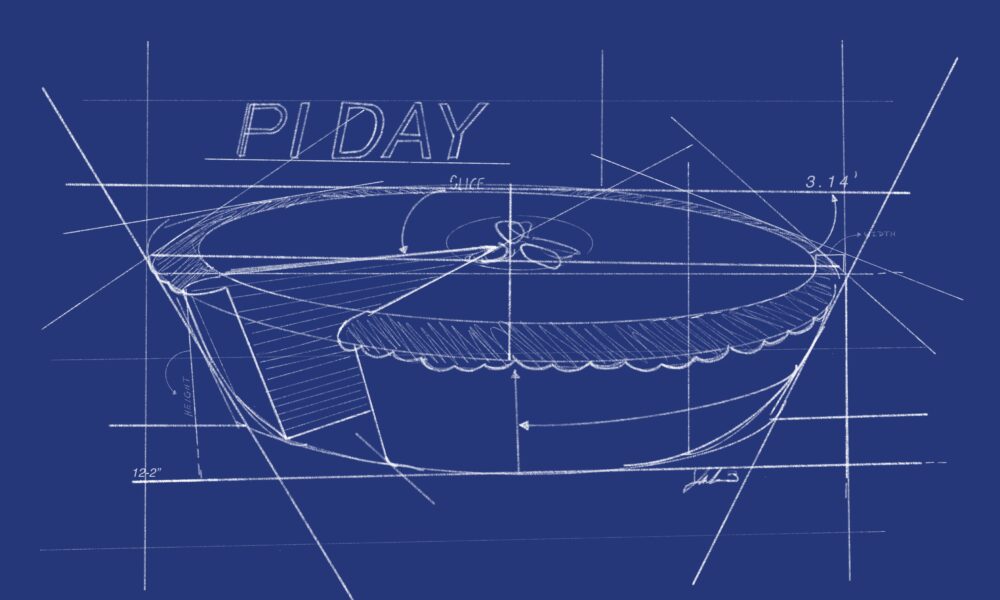Happy Pi Day! In a break from our regularly-scheduled McGill research coverage, The McGill Tribune’s Science & Technology section brings you one of our favourite apple pie recipes to celebrate an iconic day. Pi is a mathematical constant that represents the ratio of a circle’s diameter to its circumference. Crust us when we say that as science enthusiasts, we have the most awe-ins-pie-ring recipe to fill your day.
Ingredients
For the crust:
- π cups of flour
- π tsp of sugar
- 1 tsp salt
- 1 ¼ cups shortening
- ¼ cup butter
- 1 egg
- 1 tbsp vinegar
- 4-6 tbsp cold water
For the filling:
- 6-7 Granny Smith apples
- 1 tbsp lemon juice
- ½ cup sugar
- 2 tbsp flour
- 2 tsp cinnamon
Start by making the crust:
- Mix the dry ingredients (flour, sugar, and salt) together.
- Combine the butter and shortening with the dry ingredients. Cut the fat into 1-inch chunks and then use a fork or two knives to cut it into the flour mix. You can also use a food processor if you have one on hand. Either way, you’re looking for a crumbly texture, which has small chunks of fat that are not larger than a pea.
- Once you have the butter all mixed in, add the egg, vinegar, and 4 tbsp of cold water. If the dough is a little too dry, add water bit by bit until you can easily shape it into a sphere—make Archimedes proud.
- Shape the dough into two discs, cover each with cling wrap, and refrigerate for half an hour.
While the crust is chilling, preheat the oven to 400°F, and prepare the apples:
- Peel the apples and cut them into practically two-dimensional semi-circles.
- Put your apples into a bowl and mix in the lemon juice, sugar, flour, and cinnamon, as well as some ginger, nutmeg, or allspice if you want.
- Toss until the apples are coated and set aside.
Once the half-hour is up, you can begin assembling.
- Take one of the discs of dough out of the fridge. Put some parchment paper down underneath the dough and another layer on top to stop it from sticking to the rolling pin. It won’t hurt to put some flour on the parchment paper as well. Roll the dough out until it is several inches wider than your pie tin.
- Lift the parchment paper off the table, taking the top layer of paper off, and rotate it 180 degrees into the pie tin, trying to centre the crust in the pan. You should then be able to peel the remaining parchment paper off the crust fairly easily.
- Once the crust is on the pie tin, gently press it into the inner corners.
- Repeat the rolling process with the second disc of dough. Do this before you add the apples so the bottom crust doesn’t get soggy if you take a while to roll out the top.
- Pour the apple mixture into the pie plate, taking care not to pour in any liquid that has collected in it.
- Place the second crust on top and cut off any excess, leaving a fringe of about one centimetre. Crimp the crust however you like. One popular option is to press the tines of a fork into the crust around the circumference of the pie tin. You can also press the fringe of the crust between your thumb and your first two fingers in order to create a small V-shape, and then continue this pattern around the edge, trying your best to emulate your high school calculus teacher’s sine wave graphs. Either way, the important thing is to press the bottom and top crust together to create a seal.
- Make a couple of slits in the top crust of the pie with a sharp knife so hot air can escape while baking.
- Bake at 400°F for 40-50 minutes, until the crust is golden brown and the filling is bubbling. If it looks like the crust may burn, turn the heat down to 350°F or cover the edge of the crust with some tin-foil.
- Allow the pie to cool for half an hour and enjoy!









